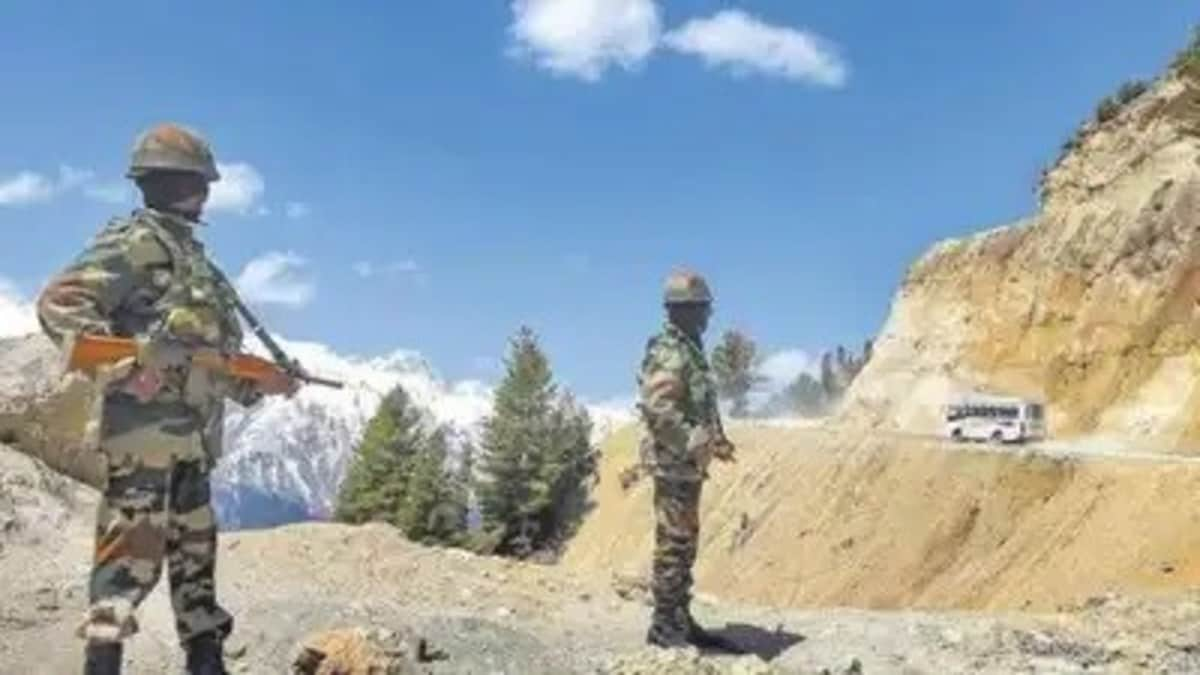The Indian Army is raising the 72 Infantry Division for permanent deployment in eastern Ladakh under the Leh-based 14 Fire & Fury Corps. This division will enhance defence along the sensitive Line of Actual Control (LAC) with China. It comprises 10,000–15,000 combat troops and 8,000 support personnel, commanded by a major general.
The formation replaces the ad-hoc Uniform Force, which will return to Jammu. The move follows heightened tensions since the 2020 Galwan Valley clash and aims to bolster strategic preparedness in this critical region. Currently, one brigade headquarters is operational, while other elements are undergoing training in western India to ensure readiness for high-altitude warfare.

When we look back at history, the slogan “Hindi Chini Bhai Bhai” symbolised friendship between India and China in the 1950s under Prime Minister Nehru, promoting peaceful coexistence. However, this goodwill ended with the Sino-Indian War of 1962. On October 20, 1962, China launched a surprise attack on India, exploiting India’s military unpreparedness.
The war lasted until November 21, 1962, when China declared a unilateral ceasefire after inflicting heavy casualties on India, with around 7,000 Indian soldiers killed or captured. After the 1962 war, the Galwan Valley clash on June 15, 2020, marked a turning point in India-China relations. The deadly confrontation, resulting in the deaths of 20 Indian soldiers and the same number of Chinese troops, was the worst border conflict in 45 years.
It occurred amid China’s aggressive troop build-up along the LAC and attempts to alter the status quo. Despite multiple rounds of military and diplomatic talks, including disengagement agreements in 2021, unresolved issues persist in key areas like Demchok and Depsang plains. The incident led to a deterioration in bilateral ties, with India reassessing its policies toward China.
After more than four years, or almost five years after Galwan clash, India and China are working to resolve the eastern Ladakh standoff comprehensively, following troop disengagement from Depsang and Demchok in late 2024. Leaders–Prime Minister Narendra Modi and President Xi Jinping–met in October 2024, agreeing to revive dialogue mechanisms. Subsequent high-level talks, including NSA Ajit Doval’s Beijing visit and Foreign Secretary Vikram Misri’s discussions, aim to normalise relations.
India insists full normalisation depends on border peace, reflecting cautious optimism amidst longstanding mistrust and strategic competition. Despite recent diplomatic talks and troop disengagement at Depsang and Demchok, China continues to strengthen its military presence along the LAC. It is building roads, camps, and infrastructure in areas like Ladakh and Arunachal Pradesh, including Tawang.
China has also upgraded dirt tracks and constructed dual-use villages near the LAC to enhance troop mobility and surveillance capabilities. These activities are raising concerns as they intensify strategic competition between India and China in the region. In 2025, China’s actions highlight why it is not a trustworthy neighbour for India.
China’s military escalation, including the development of advanced landing barges and undersea cable cutters, demonstrates its aggressive intentions. The barges enhance China’s ability to transport heavy military equipment, posing threats to regional stability, especially with Taiwan. Additionally, the undersea cable cutters could disrupt global communication networks, showcasing China’s disregard for international norms.
For India, these developments signal heightened risks along the LAC, as China continues to expand its military infrastructure near disputed borders. These aggressive strategies undermine trust and reflect China’s broader ambitions to dominate the region, raising security concerns for India and neighbouring countries. India views China as an unreliable neighbour in 2025 due to its history of backstabbing allies and pursuing aggressive policies.
China’s military expansion along the LAC and its infrastructure build-up near disputed borders raise concerns about its intentions. To counter these threats, India is strengthening its defence, including raising new military divisions like the 72 Infantry in sensitive areas like eastern Ladakh. The author is a PhD scholar at Central University of Gujarat, researching China’s domestic and foreign policies.
Views expressed in the above piece are personal and solely those of the author. They do not necessarily reflect Firstpost’s views..
Politics

Why India is raising the 72 Infantry Division in eastern Ladakh

Despite recent diplomatic talks and troop disengagement at Depsang and Demchok, China continues to strengthen its military presence along the LAC. To counter the threats, India is strengthening its defence, including raising new military divisions like the 72 Infantry in sensitive areas like eastern Ladakh















